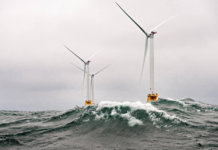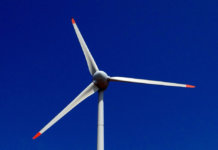 A group of wind industry leaders gathered at the WINDPOWER 2011 conference Tuesday morning to discuss the current state of wind development in the U.S. All of the panelists agreed that stable policy is crucial to advancing wind development in the country, especially during these economically challenging times.
A group of wind industry leaders gathered at the WINDPOWER 2011 conference Tuesday morning to discuss the current state of wind development in the U.S. All of the panelists agreed that stable policy is crucial to advancing wind development in the country, especially during these economically challenging times.
Industry representatives who participated in the panel discussion agreed that the expiration of the Treasury Department's Section 1603 cash-grant program at the end of this year and the expiration of the production tax credit (PTC) in 2012 are worrisome. However, the impending deadlines will actually result in a flurry of activity among developers trying to beat those deadlines, according to Steve Trenholm, CEO of E.ON Climate & Renewables North America.
‘As we all know, the 1603 program comes to an end at the end of this year, so a lot of us are working hard to try and get projects under way so we can qualify under the grant program,’ he said during the panel discussion, which was moderated by Ned Hall, incoming chairman of the American Wind Energy Association.
Vic Abate, vice president of renewable energy at GE, says that after a rough 2010, in terms of wind project development, things are beginning to look up. However, continued project construction will depend greatly on an extension of the PTC, as will the future of manufacturing companies that are part of the wind supply chain.
‘You're going to see some projects executing and people ramping up for the short term, but 2013 needs an answer really quick on the PTC extension,’ he said.
Sonny Garg, president of Exelon Power, noted that managing a multi-state book of business in an uncertain policy environment will pose another challenge for wind developers.
‘We are operating in multiple markets,’ he said. ‘That's part of our problem as a nation, where you've got different renewable portfolio standards in different states, you've got the [regional transmission organizations] that are different in terms of what they're trying to do, you've got certain ideas up on Capitol Hill, and it creates a very difficult market in which to operate and to grow.’
Garg adds that the lack of policy stability and coordination translates into sporadic opportunities rather than long-term, stable project development.
Many policymakers on Capitol Hill do not understand that it takes years to develop wind projects, which is why there is an immediate need to extend the PTC, Trenholm added.
‘There's general support on both sides of the aisle for an extension of the PTC, but the question that everybody asks is, 'It doesn't expire until the end of next year – why are you talking to us now?'’
Jan Blittersdorf, president and CEO of NRG Systems, said sales at her wind assessment company are an indicator of where the U.S. wind market stands.
‘I think it's interesting to note â�¦ that there is a concern out there,’ she said. ‘We sell all over the world, and the markets we're selling into right now are in Asia. And, frankly, our percentage of sales in the U.S. is about as low as I've ever seen it.’
Blittersdorf says the fact that manufacturers are cautious about establishing operations in the U.S. is evidence of market uncertainty.
‘The factories â�¦ are just not going to come here and set up if that long-term signal isn't there,’ she said.
Regarding long-term signals – specifically, the PTC – Trenholm summed up the panelists' thoughts: ‘Clearly, one year won't do it. Two years won't do it. I'd look for something between five and 10 years.’



